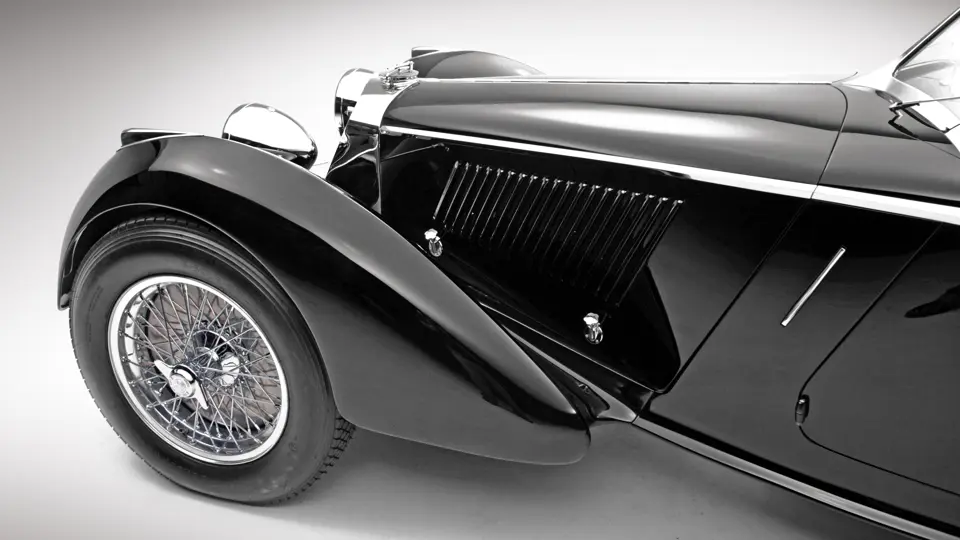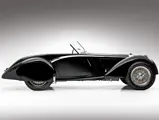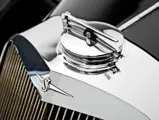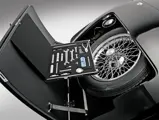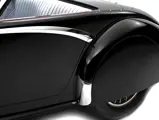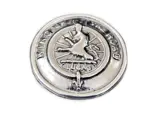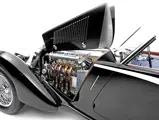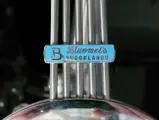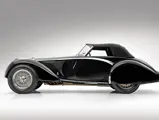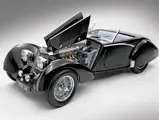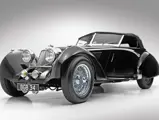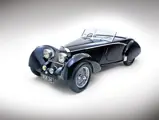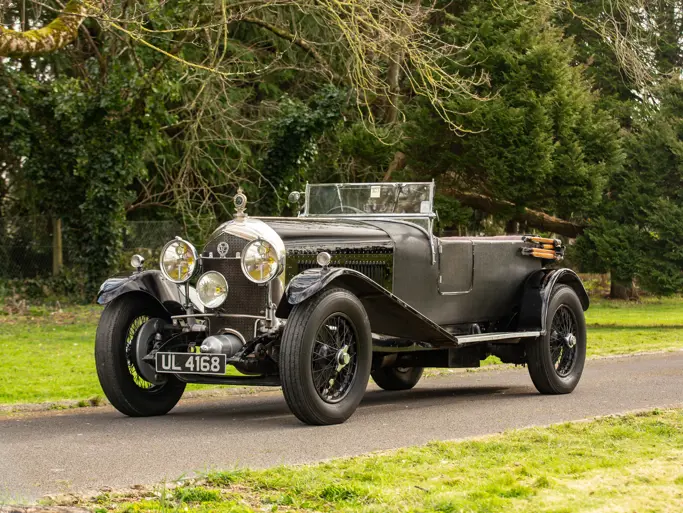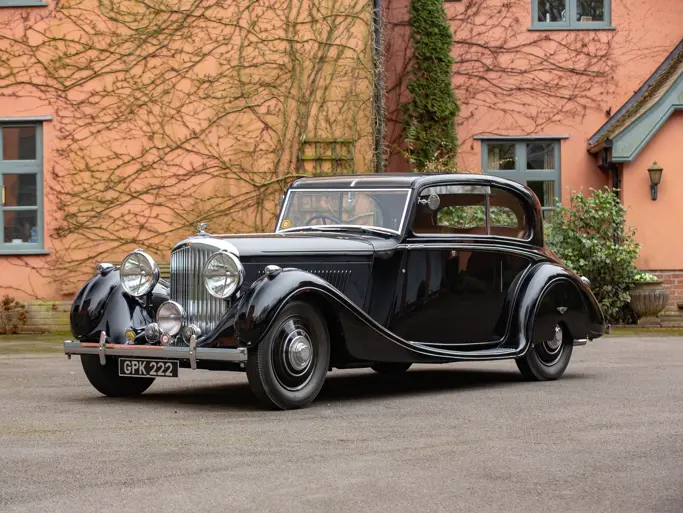110 bhp, 1,496 cc Anzani supercharged DOHC inline four-cylinder engine, four-speed Wilson pre-selector gearbox, solid front axle and live rear axle with semi-elliptic leaf springs, and four-wheel hydraulic drum brakes. Wheelbase: 104"
• The only Squire bodied by preeminent English Corsica coachworks
• Fully restored and beautifully presented
• Unique example of ultra-rare British sports car
• Supercharged Anzani engine
• The first of the final three cars built by Val Zethrin
• Known ownership history including Cameron Millar
• Shown at Pebble Beach and The Quail; multiple awards including Amelia Island and Mar-a-Lago
Adrian Squire was just 21 when he set out to build his own motor car. Dreaming of such a venture since he was a schoolboy, at 16 he sketched out a whole catalogue for the “world’s greatest sports car.” He envisioned advanced engineering and light, flowing coachwork sitting on a chassis with a low center of gravity. In many ways, he succeeded beautifully. The car we have the pleasure of offering here is proof positive of the young man’s vision.
At age 18, Squire was apprenticed to Bentley Motors and later worked as an assistant draftsman at MG. On his 21st birthday in 1931, he inherited £20,000, the capital with which he financed Squire Motors. With a friend, Jock Manby-Colgrave, he set up shop in Henley-on-Thames and formed Squire Car Manufacturing Company in 1934.
For his engine, Squire selected a 1.5-liter DOHC four, designed by T.D. Ross of Frazer Nash. Production of the engine was handled by Anzani, then supplying Frazer Nash with engines. The name “Squire” was cast into the block and manifold, giving the impression of an in-house operation. With a Roots-type supercharger designed and built by David Brown, the 1,496-cc powerplant produced 110 bhp. Squire decided on a Wilson-type E.N.V. preselector gearbox and E.N.V. live rear axle. The chassis frame was exceptionally rigid with cruciform bracing, and adjustable friction shock absorbers allowed control over ride and handling. For stopping power, its hydraulic brakes were given huge 15-inch magnesium alloy drums. From the fourth car, an underslung rear axle was used. Bodies on the early cars were by Vanden Plas, but a less-expensive body by H. Markham, Ltd. of Reading was soon adopted.
Although its chassis was completed in February 1934, the first Squire was sold in May 1935. Squire built a single-seat racer to generate enthusiasm and orders. Customers, however, did not materialize in any number, perhaps because the cars cost almost as much as a Bugatti. The last car built in 1935 was sold to Val Zethrin of Chislehurst, Kent. After but two deliveries in 1936, Squire Car Manufacturing Company was shut down, and Adrian Squire went to work at Lagonda.
Zethrin, however, took up the project, purchasing all the parts on hand. Between 1937 and 1939 he built a further three cars. Adrian Squire, sadly, was killed in a bombing raid while working at the Bristol Aeroplane Company in 1940.
As enthusiasts reflect on the Squire’s mark on sports car history, it can rightly be said that it was one of the fastest and best handling, performing and braking sports cars built prior to World War II—faster and better handling than most prewar race cars and certainly capable of out-braking many cars well into the 1950s and even the 1960s. The only direct comparisons might be the Type 55 Bugatti and Alfa Romeo 8C 2300, but the Squire’s braking advancements surpassed those of its cable-and-rod actuated colleagues. Aside from the brakes, Adrian Squire understood that a flexible chassis would yield suspect handling, and his extraordinary suspension system, which stiffened itself as it was loaded, produced otherworldly handling for the era. Not until the mid-1950s was this design criteria universally understood by postwar manufacturers.
Adrian also understood that, by moving the center of gravity as low as possible and by reducing un-sprung weight at the car's extremes, roll and uncontrolled movement were virtually eliminated and performance and handling improved without need for more horsepower. In other words, more power could be put to the road in a controlled way to provide nothing but effortless acceleration, not only out of the turns but into and through them. Simply put, the term “superior” is rightly applied to the Squire’s mechanical specification.
Chassis 1063 was the first of the final three cars built under Val Zethrin’s supervision, completed in the autumn of 1937. Originally ordered by Geoffery Munro and laid down by Adrian Squire before he left the company, it was completed subsequent to Zethrin’s arrival. In contrast to the other cars, which featured tourer bodies by the likes of Vanden Plas, Markham and Ranalah, this car was fitted with sleek drophead coupe coachwork by Corsica. Upon delivery it was issued British registration BGB 34, a Glasgow number from September 1937.
Corsica coachworks was established at Kings Cross, London in 1920 by Charles Stammers and his brothers-in-law, Joseph and Robert Lee. Always a relatively small operation, the firm claimed not to have employed designers, preferring instead to directly carry out its customers’ devices and desires. Because Corsica was small and could cater intimately to customers’ whims, the workshop attracted many of the sporting crowd, and while little is known of the early ’20s Corsica output, a good deal of it is believed to have involved Bentley.
The early 1930s brought some of the best-known Corsica coachwork, including a low-slung sports body for the Double Twelve Daimler and an open two-seater for Donald Healey’s 1935 Triumph Dolomite, by which time the works had moved to Cricklewood. For MG general manager Cecil Kimber, Corsica worked up a drophead coupe for a supercharged K-Type Magnette. In addition to traditional British marques Rolls-Royce, British Salmson, Frazer Nash and Lea-Francis, Corsica also worked on Continental chassis, mainly Alfa Romeo and Mercedes-Benz. Later on, more than a dozen Type 57 Bugattis were bodied, including one for Sir Malcolm Campbell, the Grand Prix driver and land-speed record holder. Like many of the bespoke builders, Corsica closed its doors during World War II, never to re-open.
This Squire was owned for many years by British Maserati aficionado Cameron Millar. In December 1984, it was exported to the United States in the ownership of Dr. Douglas Oosterhaut, a prominent San Francisco plastic surgeon. Dr. Oosterhaut used it regularly until 1986, when he sold it to California collector Bob Cole, who drove it for some ten years. During Cole’s ownership it was serviced and maintained by Phil Reilly & Company, the respected California restoration and vintage motorsport workshop. In the spring of 1995, Bob Cole passed the car on to his son Rob, proprietor of Cole Classic Corporation in Burlingame. That June it was acquired by Washington State collector Pat Hart.
Although the car was remarkably original and in good running order at the time of sale, Hart embarked on an extensive, three-year, no-expense-spared restoration. Undertaken by Don Vogelsang in Seattle, the rebuild was complete and involved some enhancement of the body.
Hart was convinced that the body had been built to grace another chassis, since it seemed uncomfortable on the Squire. The hood sat a bit high, hiding the top of the iconic radiator shell that graced all the cars from Squire Car Manufacturing Company. To correct the proportions, he had Vogelsang section the body by two inches. This allowed the entire radiator shell, previously partly hidden, to see the light. The transformation required some further modifications to the trunk area: “take a couple of darts out of it,” he instructed Vogelsang in tailor talk. The beltline now sat lower, and the tumble-home of the trunk was less severe. A new top was made, a vee’d windshield was fitted, and sculpted skirts were added to the rear fenders. As a finishing touch, a toolkit was fashioned into the bottom-hinged trunk-lid. Enthusiasts will agree the modifications are simply spectacular.
It was finished in the original black, complemented by light blue leather. Fresh from the shops, the car made its debut at the 1998 Pebble Beach Concours d’Elegance. After the show it took pride of place in Hart’s private collection, where it remained until his passing in 2002. It was then stored until 2010, when it appeared at The Quail, a Motorsports Gathering, at Quail Lodge in Carmel, California. The current owner acquired it shortly thereafter.
Since acquisition, the owner has had the engine returned to top running condition, as it had languished from disuse. It has now been completely re-sealed and reflects the concours condition that the car displays. The 2011 show season was exciting, beginning at Palm Beach, Florida, where it was voted People’s Choice and Best of Show at Classic Sports Sunday at the Mar-a-Lago Club in January. At Amelia Island in March it received the Breitling Award for Timeless Beauty, then copped Designers’ Choice at the prestigious Art Center College of Design in Pasadena, California and finished Best in Class at California’s Del Mar Concours in October.
Each Squire automobile is unique in its own way. It is not a breach of grammar, however, to say that this one is more unique than all the others, not simply because it is the only Corsica-bodied example but because it has a completely different character than any of the others. Its aesthetic appeal can hardly be overstated. Although all Squires are heralded by the laid-back vee-shaped radiator grille, their bodies are typically of “trad Brit” sports car idiom. Hart and Vogelsang, however, in shaping this car added a substantial dose of French elegance and élan, such that it seems to spring forward, out of its skirted hindquarters. The windscreen now mimics the vee of the grille, and huge headlamps team with driving lights to illuminate the way ahead. The engine room, meanwhile, is a brilliant display of industrial art.
Nine of the original ten Squires survive. This one is, quite simply, the loveliest of them all.

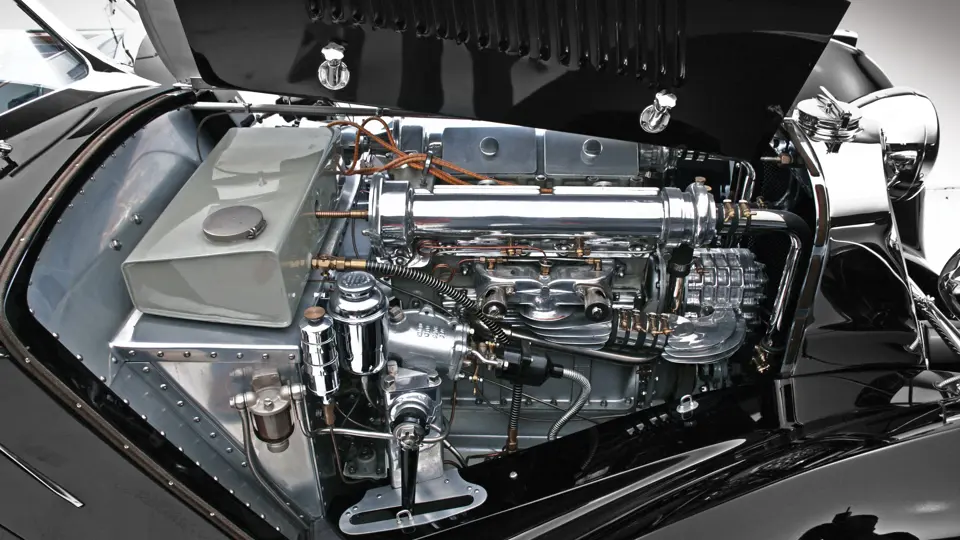
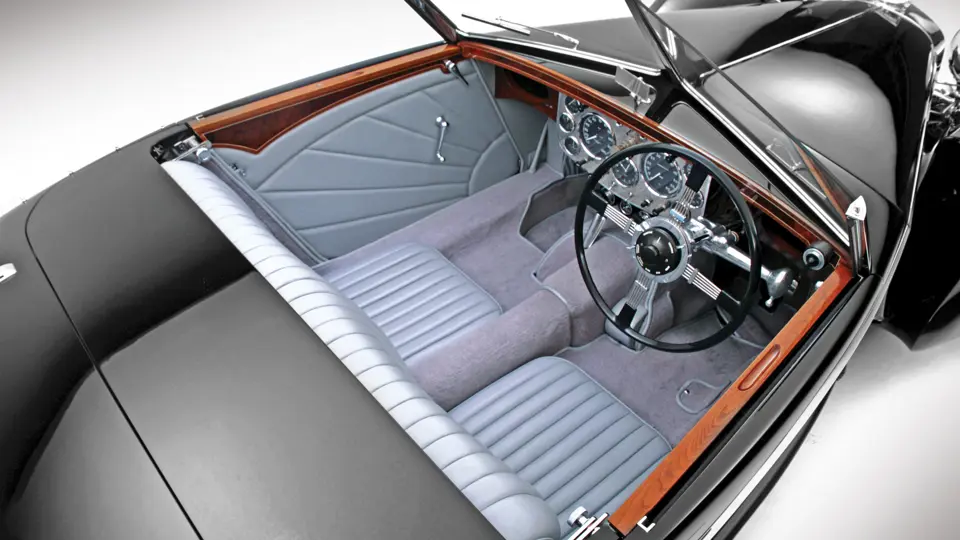

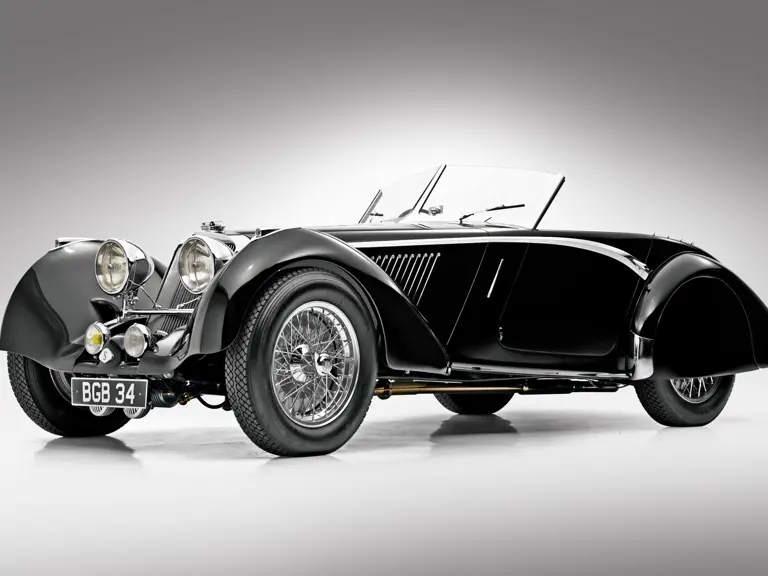
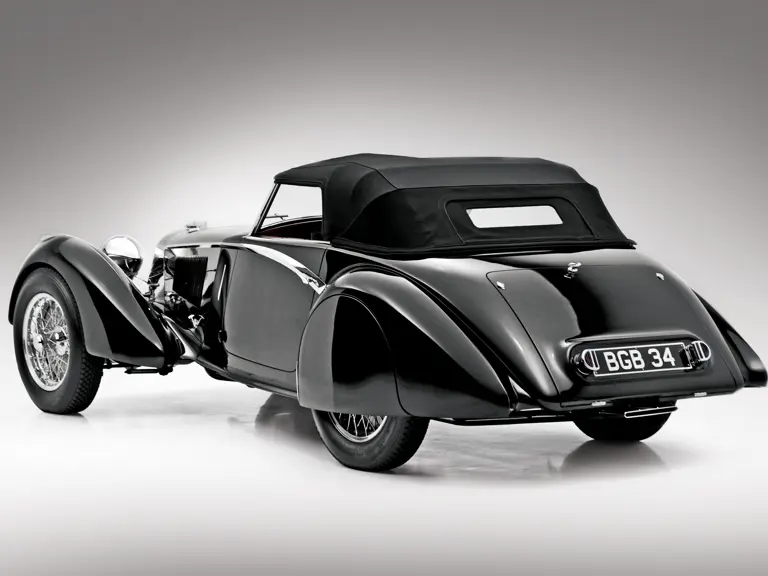
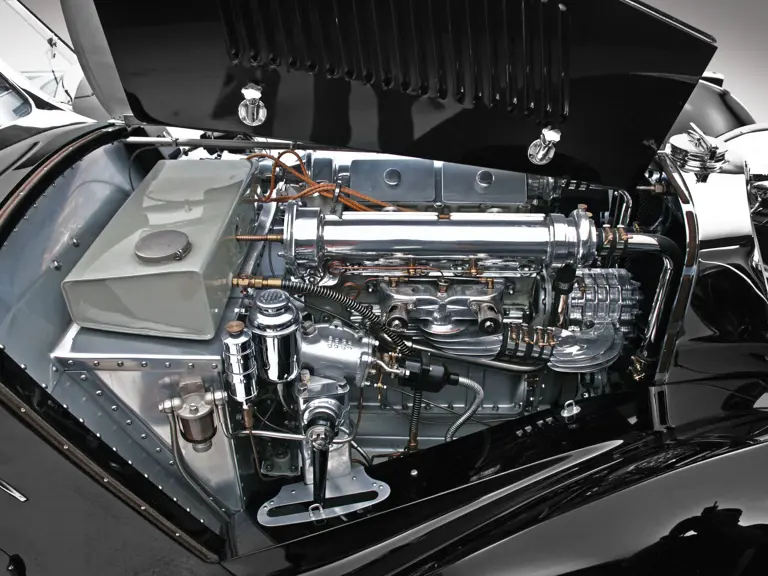
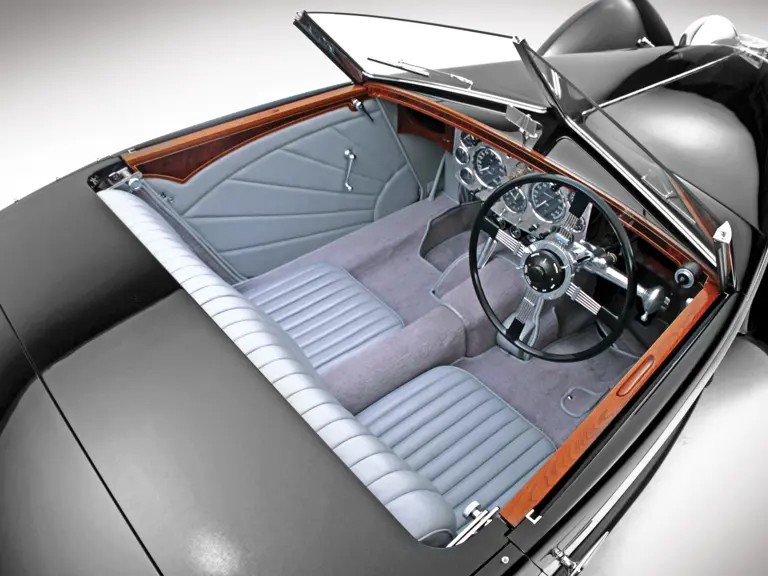
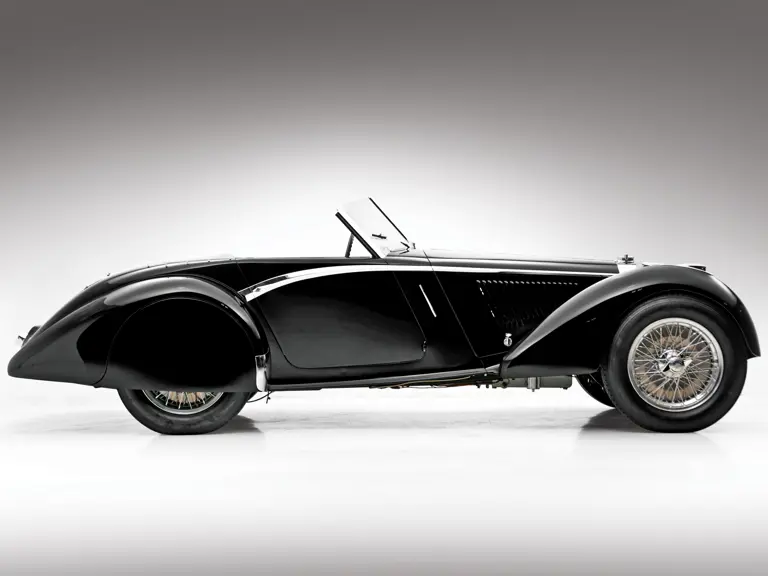

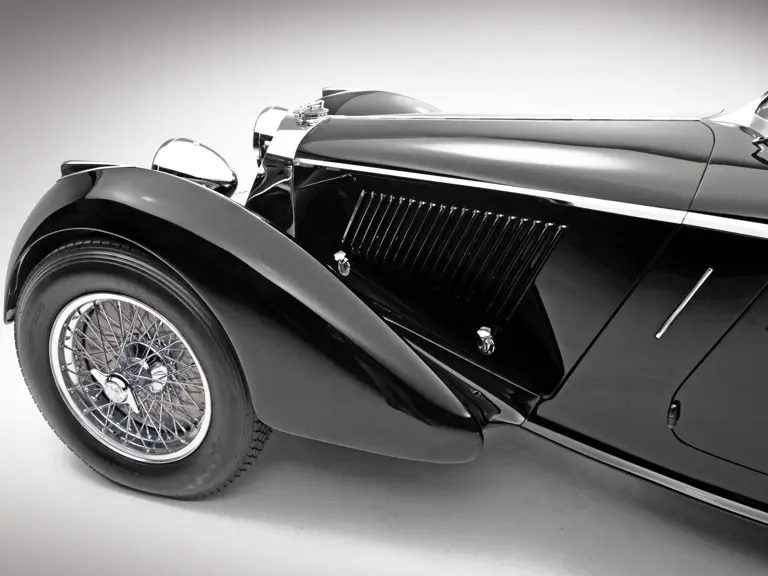
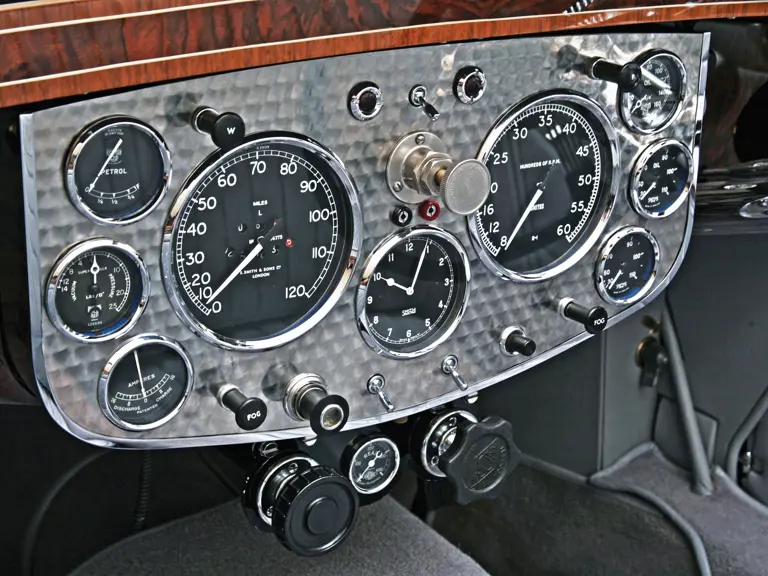
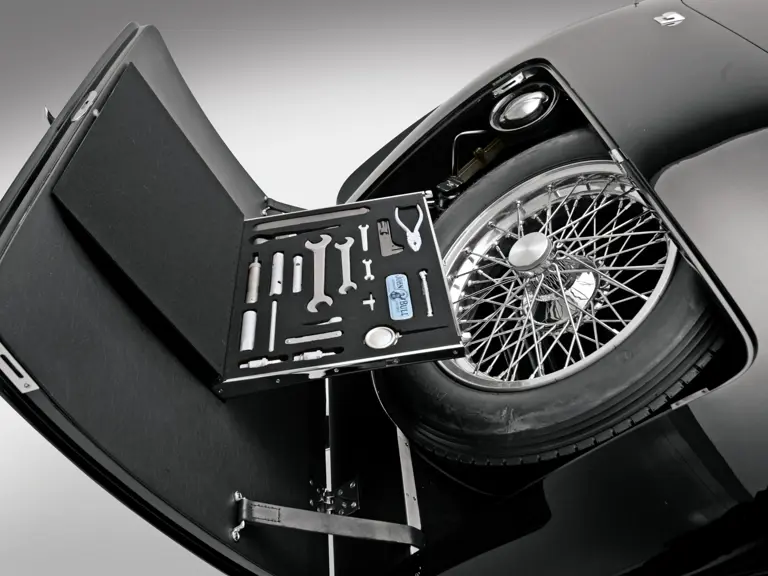
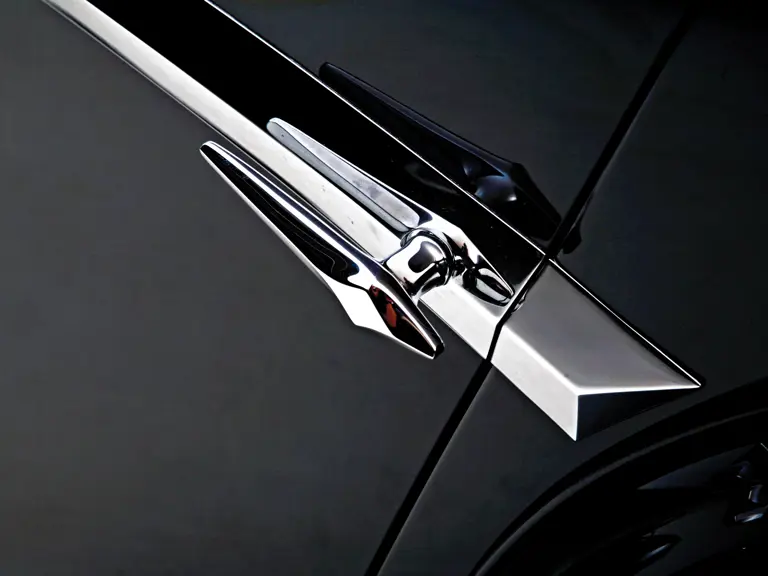
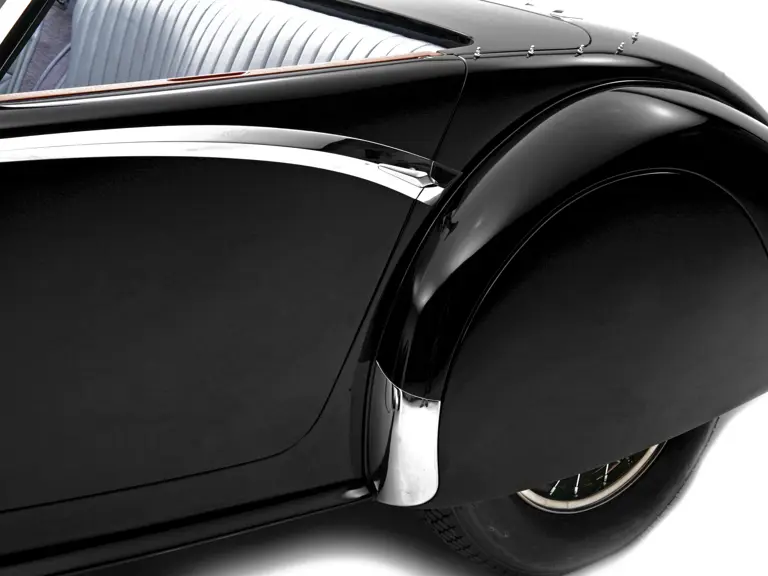
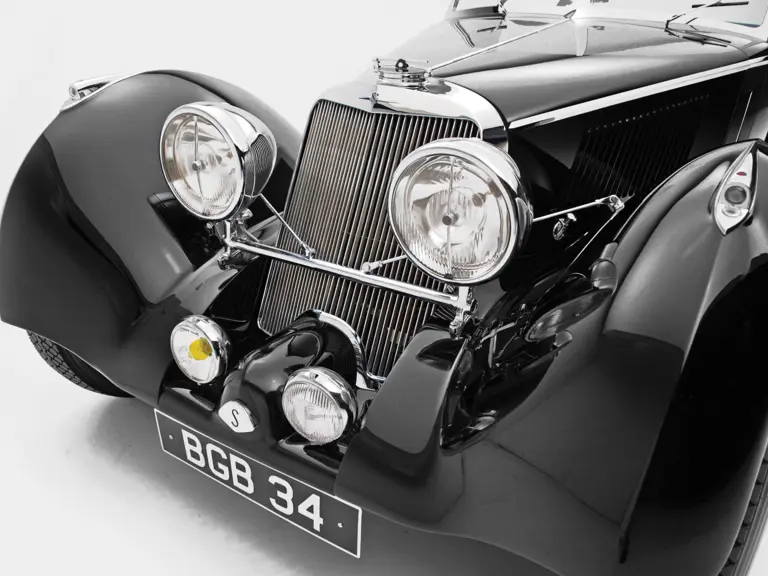
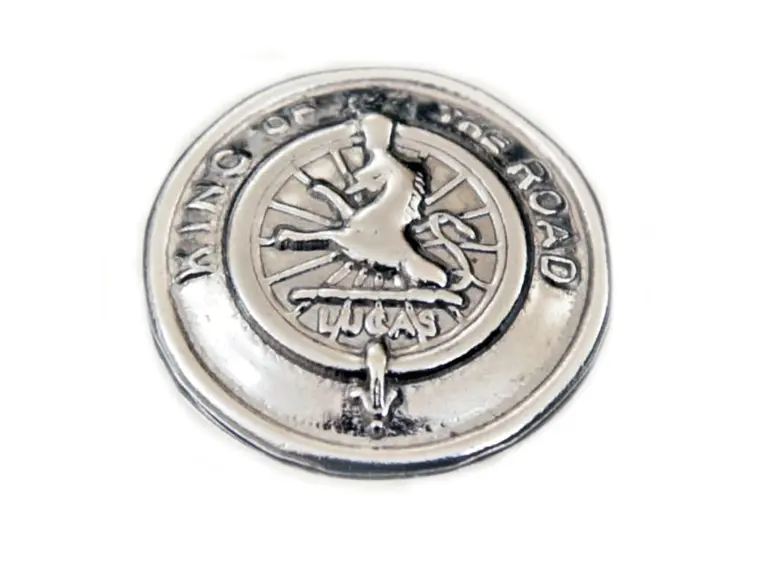
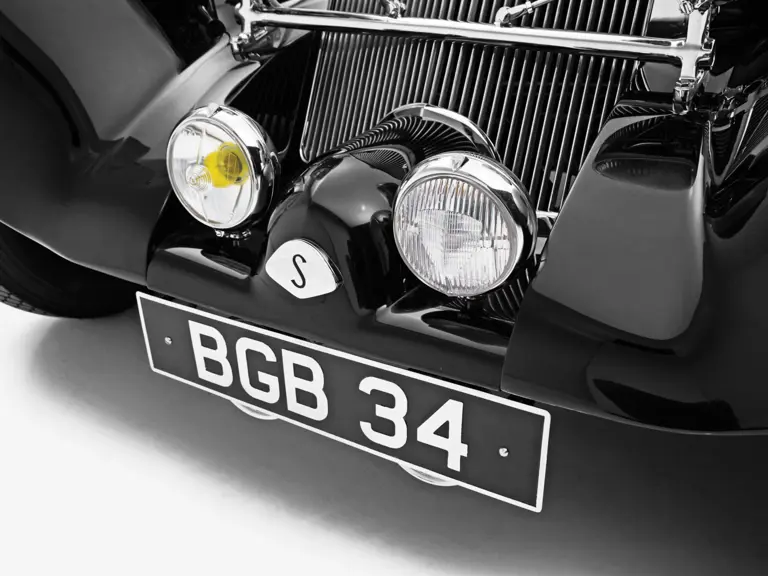
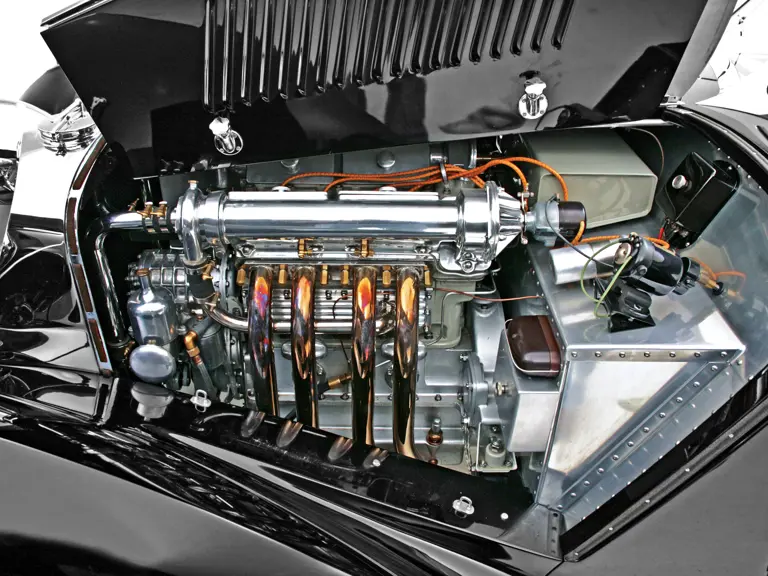

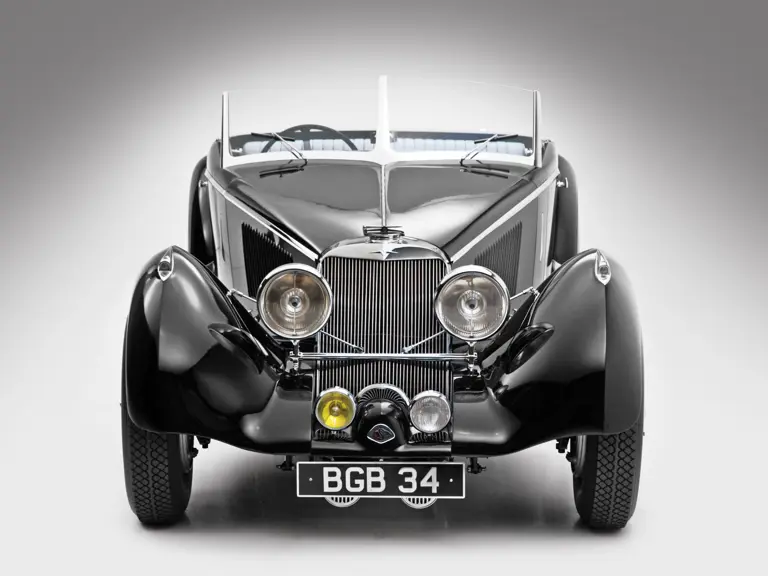

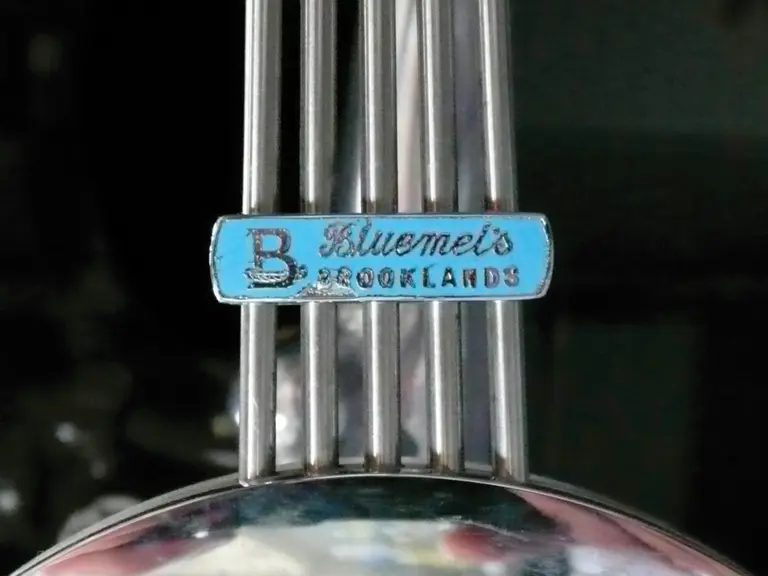
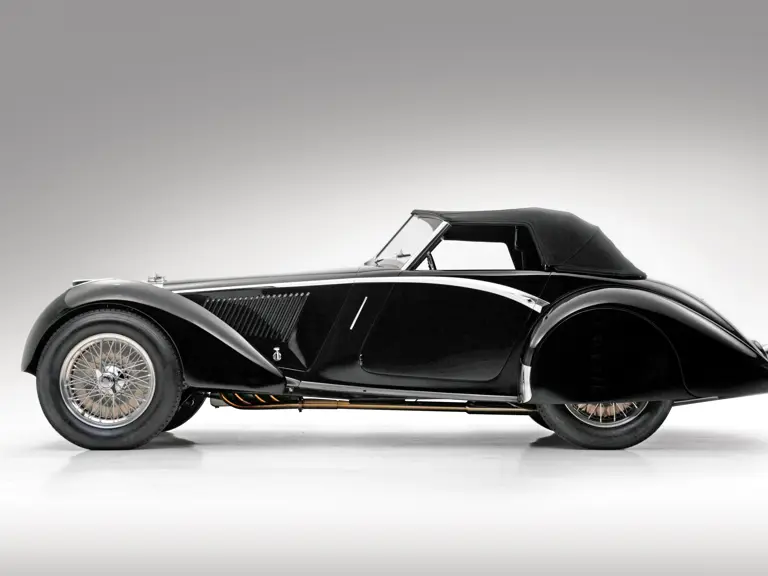

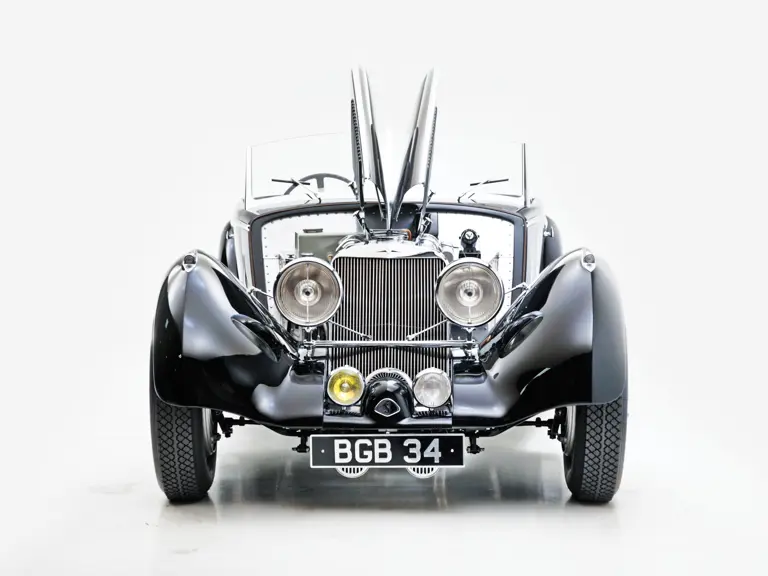
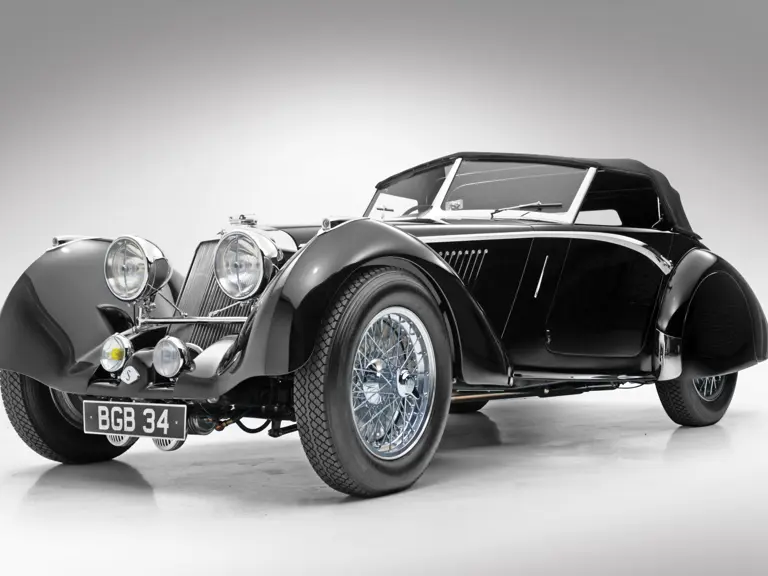
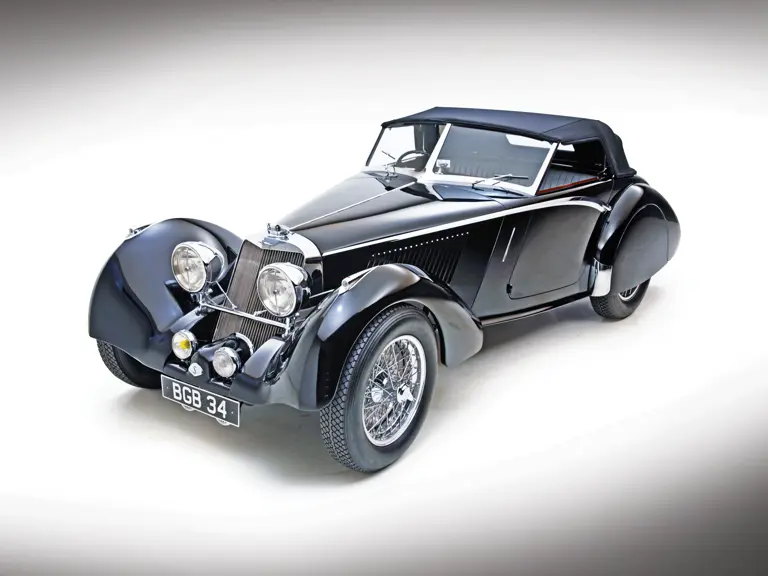
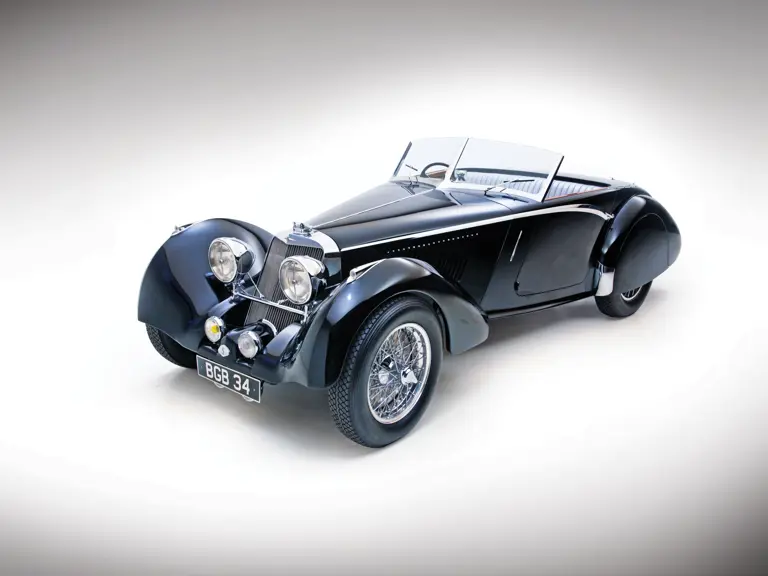

 | Amelia Island, Florida
| Amelia Island, Florida


